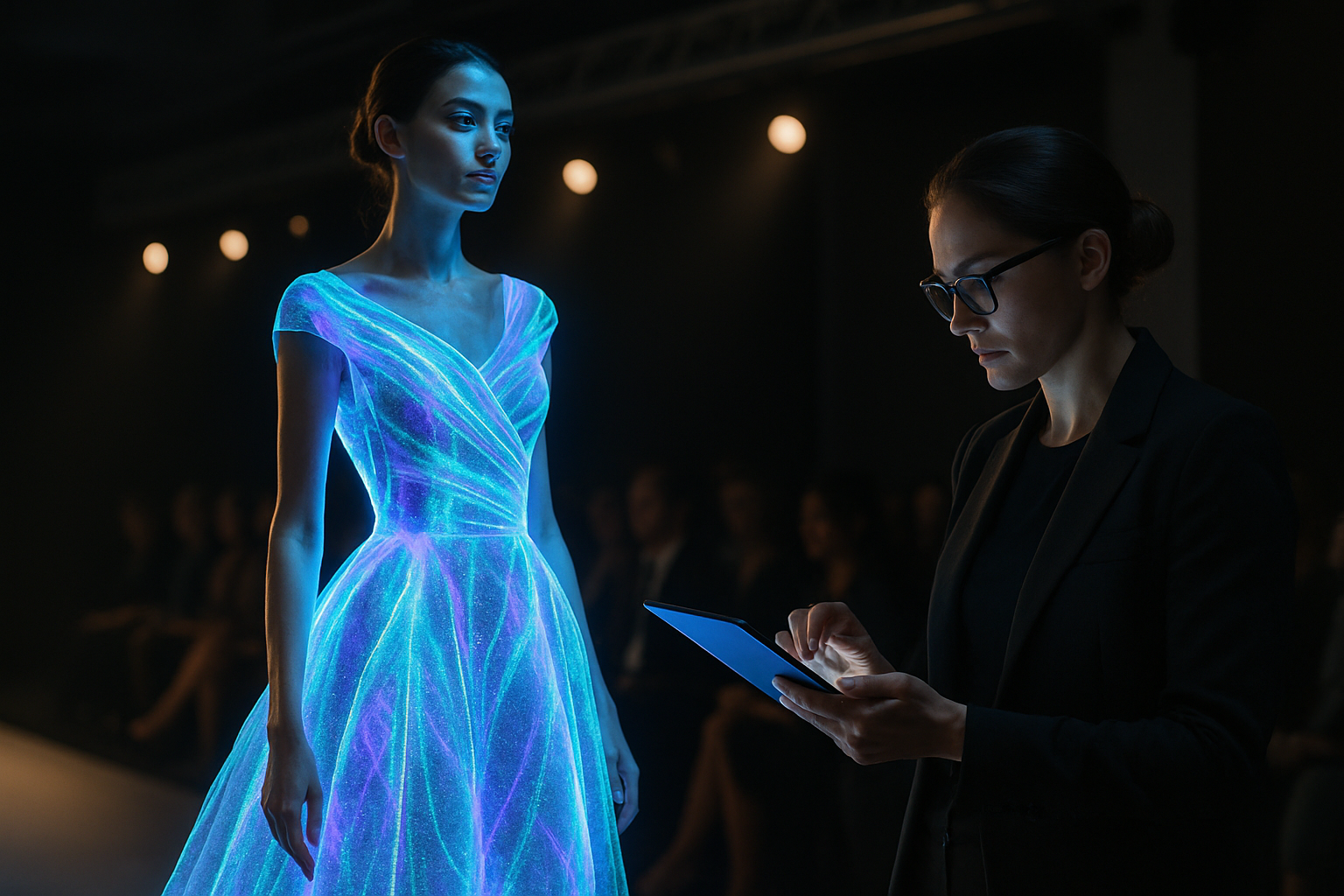Holographic Haute Couture: Fashion's Digital Frontier
In the ever-evolving landscape of fashion, a groundbreaking trend is redefining the boundaries of style and technology. Holographic haute couture, a fusion of cutting-edge digital innovation and high-end fashion design, is captivating runways and red carpets alike. This futuristic approach to clothing combines traditional craftsmanship with state-of-the-art holographic projections, creating garments that shift, shimmer, and transform in real-time. As the fashion industry embraces this new frontier, designers, technologists, and fashion enthusiasts are exploring the limitless possibilities of clothing that exists at the intersection of the physical and digital realms.

As technology advanced, the fashion industry began to take notice. In the late 2000s, designers started experimenting with projection mapping on static garments, creating the illusion of moving patterns and textures. This marked the beginning of a new era in fashion, where clothing could be dynamic and interactive.
Technological Breakthroughs
The true revolution in holographic fashion came with the development of flexible, wearable displays and advanced projection technologies. Researchers at leading tech institutes collaborated with fashion houses to create ultra-thin, malleable screens that could be integrated seamlessly into fabric.
These technological breakthroughs allowed designers to move beyond simple projections and create truly interactive garments. Sensors embedded in the clothing could now respond to the wearer’s movements, environment, and even emotional states, altering the holographic display in real-time.
Pioneers of Holographic Haute Couture
At the forefront of this movement are designers who straddle the worlds of fashion and technology. Names like Iris van Herpen and Hussein Chalayan have become synonymous with holographic haute couture, pushing the boundaries of what’s possible in fashion design.
Van Herpen’s collections feature garments that seem to defy physics, with holographic elements that create the illusion of movement and transformation. Chalayan, known for his innovative approach to fashion technology, has created pieces that change color and pattern on command, blurring the line between clothing and performance art.
The Runway Revolution
Holographic fashion has transformed the traditional runway show into a mesmerizing spectacle of light and motion. Models now walk the catwalk wearing garments that shift and change before the audience’s eyes, creating an immersive experience that goes beyond the typical fashion presentation.
These shows have become highly anticipated events, drawing not just fashion industry insiders but also tech enthusiasts and futurists. The merging of fashion and technology has opened up new avenues for creativity and expression, allowing designers to tell more complex and dynamic stories through their collections.
Challenges and Controversies
Despite its groundbreaking nature, holographic fashion faces several challenges. The high cost of production and the need for specialized knowledge in both fashion design and technology create barriers to entry for many designers. There are also concerns about the environmental impact of the electronics required for these garments.
Additionally, some critics argue that holographic fashion prioritizes spectacle over substance, potentially overshadowing the craftsmanship and artistry of traditional fashion design. There’s an ongoing debate within the industry about finding the right balance between innovation and tradition.
The Future of Fashion
As holographic technology continues to advance, the possibilities for fashion seem limitless. Designers are exploring concepts like personalized holographic displays that can change based on the wearer’s preferences or mood, and garments that can adapt to different climates or social situations.
The integration of artificial intelligence into holographic fashion is another exciting frontier. AI algorithms could potentially create unique, evolving designs in real-time, turning each piece of clothing into a constantly changing work of art.
Impact on Everyday Wear
While holographic haute couture currently occupies the realm of high fashion and avant-garde design, its influence is beginning to trickle down to more mainstream fashion. Sportswear brands are experimenting with holographic elements in athletic wear, creating dynamic designs that respond to the wearer’s movements.
In the world of accessories, holographic technology is being used to create bags, shoes, and jewelry that can change appearance on demand, offering consumers unprecedented versatility in their wardrobe choices.
Cultural Significance
Holographic fashion represents more than just a technological advancement; it’s a reflection of our increasingly digital world. As our lives become more intertwined with technology, our clothing is evolving to reflect this new reality.
This movement also raises interesting questions about identity and self-expression in the digital age. With holographic fashion, individuals can change their appearance instantly, blurring the lines between physical and digital self-representation.
Conclusion
Holographic haute couture stands at the forefront of fashion innovation, challenging our perceptions of what clothing can be. As designers continue to push the boundaries of technology and creativity, we can expect to see even more breathtaking and transformative designs in the future.
This fusion of fashion and technology not only offers new possibilities for artistic expression but also prompts us to reconsider the role of clothing in our lives. As we move further into the digital age, holographic fashion may well become the new standard, offering a dynamic and interactive wardrobe that reflects the fluidity and complexity of modern life.




